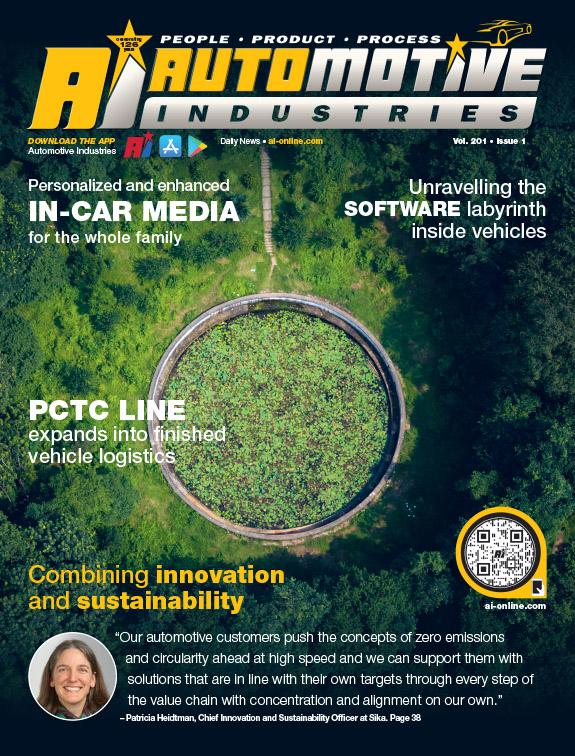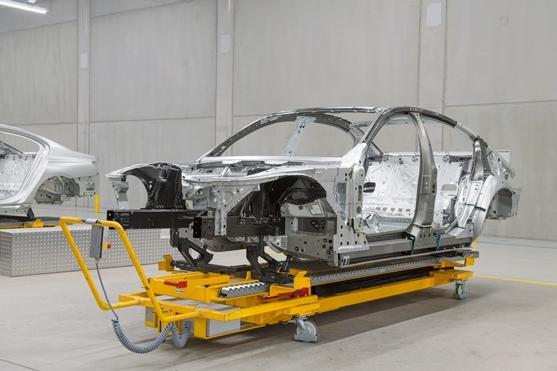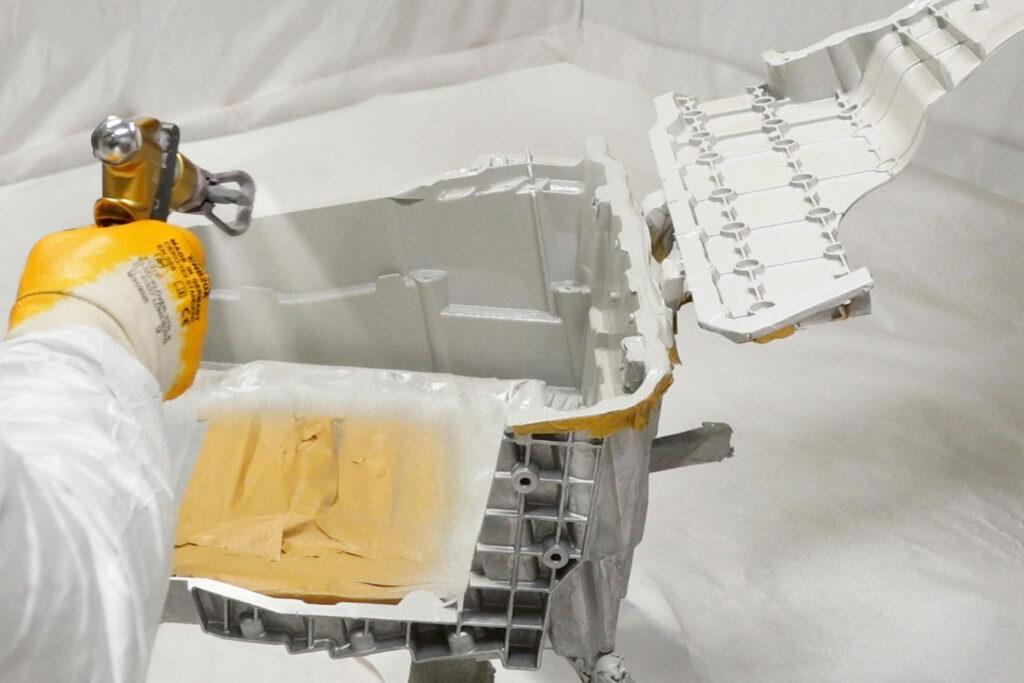

Automotive companies wishing to remain competitive or even stay in business are having to re-engineer their entire manufacturing and assembly value chains in order to minimize the impact of their operations on the environment.
Automotive Industries (AI) asked Patricia Heidtman, Chief Innovation and Sustainability Officer at Sika how the company is becoming more sustainable.
Heidtman: Sustainability permeates the entire organization and is an essential driver in developing competitive solutions for demanding markets and emerging customer needs. It is the strategic target of Sika to enable sustainable construction and transportation solutions that directly contribute to lowering the environmental footprint along the value chain.
Sustainability encompasses the quest for alternative, renewable materials, low carbon solutions, new recycling concepts, more efficient production methods like modular building, resource efficiency, health and safety at the workplace and in living spaces, enhanced flexibility in product application and production, and digitally enhanced product solutions and applications.
AI: How do sustainability and innovation fit together?
Heidtman: Combining innovation and sustainability allows Sika to strengthen and accelerate its concept for enabling sustainable construction and transportation by placing sustainability aspects at the core of strategic and operational innovation processes, while simultaneously driving operational efficiency and excellence across the organization. We are active members of organizations and initiatives like World Business Council of Sustainable Development (WBCSD) and Together for Sustainability (TfS), and collaborate with many stakeholders to reach sustainability benefits throughout the value chain.
AI: How does sustainability align with your growth strategy?

Heidtman: The Sika Growth and Sustainability Strategies are closely linked to each other: The Sika Growth Strategy 2023 ensures long-term success and profitable growth. The company’s innovative drive combined with sustainability is a key component. Sustainability is the overarching principle with the overall goal to reduce the CO2 emissions (scope 1 and 2) per ton sold by 12% until 2023.
Furthermore, the Sustainability Strategy “More Value – Less Impact” 2023 refers to Sika’s ambition to maximize the value of its solutions and contributions for all stakeholder groups, while simultaneously minimizing the risks and resource consumption associated with value generation. With its sustainability strategy, Sika pursues six strategic target areas, focusing on climate performance, energy, waste/water, community engagement, occupational safety, and sustainable solutions.
AI: How do you identify and process key sustainability topics?
Heidtman: The goal is always to increase customer benefits with innovative products, improve human living standards, while at the same time minimizing the use of resources and the burden on the environment. To align the sustainability strategy with stakeholder expectations, Sika regularly processes a materiality analysis. The materiality analysis 2022 is based upon the feedback of more than 1,000 stakeholders and allows us to identify the most important ESG/Sustainability topics, opportunities, and risks for the business from two perspectives: their importance to Sika stakeholders and their impact on Sika’s business.
AI: What does Sustainability mean in terms of customer focus?
Heidtman: Sika takes a holistic approach based on the three pillars of environmental, social and governance aspects. Our company targets the development of proprietary technology that provides both performance and sustainability benefits and thus allows Sika’s product platforms to respond to global trends such as resource saving building methods, energy-efficient and low-emission construction materials, high-speed manufacturing processes, modular construction, and lighter and safer vehicles.
Key projects focus on high-performance components with tailored features, smart refining techniques for polymers and surfaces, renewable and biobased materials including recycling processes and sustainable construction methods, and digitalized manufacturing technologies such as 3D printing.
The objective is to help customers meet the challenges they face by introducing new products in response to tighter climate-related and chemical regulations, increased sustainability awareness among their customers, and shortage of skilled labor.
AI: Sustainable Solutions are one of Sika’s target areas. What does that refer to?
Heidtman: The Sustainability Portfolio Management (SPM) concept is the backbone of the “Sustainable Solutions” strategy and how the company makes sure that its cutting-edge products always combine performance and sustainability benefits. SPM links Sika’s strengths and innovation-driven product strategy with sustainability and facilitates strategic alignment.

SPM provides guidance and definitions for a shared understanding of a “sustainable solution” and of how it is measured and communicated in a reliable and fact-based way in the markets. Sika uses methodology to assess both performance and sustainability-related risks and opportunities of product-technology combinations in defined segments in which Sika is active. This will lead to a deeper understanding of the sustainability performance of Sika products and solutions portfolios, focusing on new developments and identifying mitigation actions for existing products by reference to innovation priorities, and portfolio actions.
AI: How do you promote sustainability in your organization?
Heidtman: A network of Regional Sustainability Managers, coordinated by the Innovation and Sustainability team, has the objective to strengthen the rollout of the sustainability strategy at regional and local levels.
Local operations managers are responsible for implementing initiatives helping Sika’s targets to be met and for setting and achieving local targets. To facilitate the interaction and align the various initiatives, an internal Sika Sustainability Committee was established. This committee steers and coordinates all sustainability-related projects aimed at achieving sustainability targets and monitoring proper implementation of the Sustainability Strategy throughout the Group. It also prepares the decision-making of Group Management on such topics. We promote training and have created a “Sika Sustainability Academy” to run capacity building programs.
AI: What do you focus on in your community engagement program?
Heidtman: Sika is helping local communities to build up and maintain infrastructure for social projects. This is because besides its automotive and industry business, Sika applies its products for bonding, sealing, damping, reinforcing, and protecting. Important elements of community support encompass the advancement of education and vocational training, as well as projects that focus on water and climate protection. We collaborate with existing charity organizations and Sika staff are contributing to those activities through volunteering work.
AI: How are you engaging with suppliers and customers?
Heidtman: Collaboration is key and while do our own homework in reducing the impact of our production and logistics, we also see ourselves as enabler for our customers to reach their own targets through improved vehicle efficiency and battery e-vehicles, and at the end-of life with improved recyclability concepts. As purchased goods and services account for the major part of our footprint, we investigate potentially more sustainable raw-materials and invest into responsible supply-chain sourcing.
AI: Does your cooperation scheme include competitors?
Heidtman: Yes, of course. Fighting climate change is an ambition we share with our competitors and the other stakeholders in the industry. We collaborate in the relevant global organizations like the “World Business Council for Sustainable Development”, where we participate in working groups and case studies. Or the “Together for Sustainability” initiative, where Sika is chairing a workstream which aims to develop a global solution for scope 3 greenhouse gas emissions, product carbon footprint calculation and sharing.
AI: Where to next for Sika in terms of sustainability?
Heidtman: The aim to become a net zero company pushes us to the next level of this very meaningful and challenging sustainability journey. It affects our production, the product portfolio and our entire organization. Our automotive customers push the concepts of zero emissions and circularity ahead at high speed and we can support them with solutions that are in line with their own targets through every step of the value chain with concentration and alignment on our own.


More Stories
Acoustic sensor systems and Fraunhofer measurement technology for in practical testing ͏
OSI Systems Receives $10 Million Order for Cargo and Vehicle Inspection Systems
Mitsubishi Electric Automotive America Launches Guardian Generation 3 Trial with Seeing Machines in North America